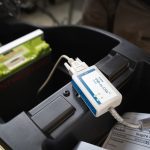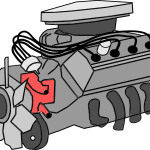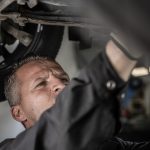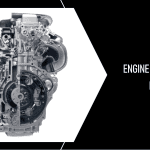Table of Contents
- Key Takeaways
- Tesla’s OBD2 Ports: Explained
- Understanding Tesla’s Diagnostic System
- The Evolution of Tesla’s Diagnostic Ports
- How Tesla’s Diagnostic Levels Work
- OBD2 Ports in Electric Cars: Tesla’s Unique Approach
- Frequently Asked Questions
- Can I Use a Regular OBD2 Scanner on My Tesla?
- What Kind of Information Can I Access Through the OBD2 Port on a Tesla?
- Are There Any Risks or Limitations to Using Aftermarket Scanners With a Tesla?
- How Do I Access Tesla Toolbox for Deep-Level Diagnostics?
- How Does the Functionality of the OBD2 Port in a Tesla Differ From Traditional Vehicles?
Contrary to popular belief, Teslas do have OBD2 ports. However, their diagnostic system goes beyond the standard OBD2 functionality.
In this article, we will delve into Tesla’s unique approach to diagnostics and explore the evolution of their diagnostic ports.
From the Basic Diagnostic level that provides essential information about the vehicle’s status to the Tesla Toolbox used by authorized dealers for deep-level diagnostics, we will uncover the intricacies of Tesla’s diagnostic system.
Additionally, we will discuss the distinct functions of OBD2 ports in electric cars, including Teslas.
Key Takeaways
- Tesla models have OBD2 ports for compliance with emissions and regulations.
- Newer Tesla models like Model 3 and Model Y have a Diagnostic Port located at the back seat.
- Tesla vehicles have 3 levels of diagnostics: Basic Diagnostic, Cable Diagnostic, and Tesla Toolbox.
- Tesla faults are based on current events, unlike standard vehicles that use fault-based troubleshooting.
Tesla’s OBD2 Ports: Explained
Tesla’s OBD2 ports, found in models like the Model S and Model X, serve the purpose of complying with emissions and regulations. While Tesla vehicles have OBD2 ports, their functionality differs from traditional vehicles.
OBD2 functionality in Tesla vehicles is limited compared to the capabilities of Tesla’s Diagnostic Port. The OBD2 port primarily provides information related to emissions and vehicle systems, such as battery state of charge and electric motor status.
In contrast, Tesla’s Diagnostic Port offers three levels of diagnostics: Basic Diagnostic, Cable Diagnostic, and Tesla Toolbox. Basic Diagnostic provides vehicle status, warning messages, software updates, and service mode. Cable Diagnostic allows for additional diagnostic features using aftermarket scanners.
The Tesla Toolbox, accessible only to authorized dealers, enables deep-level diagnostics, software updates, configuration changes, and maintenance procedures.
Understanding Tesla’s Diagnostic System
The different diagnostic levels of Tesla vehicles provide various capabilities for vehicle diagnostics.
Tesla’s diagnostic tools, including the OBD2 and Tesla Diagnostic Port, each have their own pros and cons.
The OBD2 port, which is found in older Tesla models like the Model S and Model X, allows for basic diagnostics such as vehicle status, warning messages, software updates, and service mode. However, it lacks the advanced features available through the Tesla Diagnostic Port.
The Diagnostic Port, located in newer Tesla models like the Model 3 and Model Y, offers more comprehensive diagnostic capabilities through aftermarket scanners like Scan My Tesla, OBDLink MX+, and Washinglee OBD2 Diagnostic Cable.
Additionally, Tesla Toolbox, a web-based tool accessible only to authorized dealers, provides deep-level diagnostics, software updates, configuration changes, and maintenance procedures.
When comparing OBD2 and Tesla Diagnostic Port, it is important to consider the specific diagnostic needs and capabilities required for each vehicle.
The Evolution of Tesla’s Diagnostic Ports
Over time, Tesla has updated their vehicles to include different types of diagnostic ports. The evolution of Tesla’s diagnostic technology has brought several benefits to their diagnostic system.
- Enhanced Diagnostic Capabilities: Tesla’s newer models, such as the Model 3 and Model Y, feature a Diagnostic Port located at the back seat. This new port provides enhanced diagnostic capabilities compared to the standard OBD2 port found in older models like the Model S and Model X.
- Improved Access: The updated diagnostic ports allow for easier access to diagnostic information and functions, making it more convenient for technicians to diagnose and troubleshoot any issues that may arise.
- Advanced Diagnostics: Tesla’s diagnostic system offers three levels of diagnostics: Basic Diagnostic, Cable Diagnostic, and Tesla Toolbox. These levels provide varying degrees of diagnostic information, allowing for more comprehensive and accurate troubleshooting of the vehicle’s systems.
- Streamlined Maintenance: The updated diagnostic ports enable Tesla technicians to perform software updates, configuration changes, and maintenance procedures more efficiently. This streamlines the maintenance process and ensures that Tesla vehicles are operating at their optimal performance.
Overall, the evolution of Tesla’s diagnostic technology has greatly improved their diagnostic system. It provides enhanced capabilities, improved access, advanced diagnostics, and streamlined maintenance procedures.
How Tesla’s Diagnostic Levels Work
When using advanced diagnostic tools, technicians must take caution to avoid damaging the vehicle and voiding the warranty. Tesla’s diagnostic levels offer several advantages over traditional OBD2 systems. Here is a comparison:
| Diagnostic Levels | Advantages |
|---|---|
| Basic Diagnostic | Provides vehicle status, warning messages, software updates, and service mode. |
| Cable Diagnostic | Offers additional diagnostic features using aftermarket scanners like Scan My Tesla and OBDLink MX+. |
| Tesla Toolbox | A web-based tool for authorized dealers, allowing deep-level diagnostics, software updates, configuration changes, and maintenance procedures. |
While Tesla’s diagnostic levels provide advanced capabilities, there are potential risks associated with using aftermarket scanners with Tesla’s Diagnostic Port. These risks include compatibility issues, limited access to certain features, and the possibility of voiding the vehicle’s warranty if unauthorized modifications are made. It is crucial for technicians to use compatible and authorized diagnostic tools to ensure the safety and integrity of the vehicle’s system.
OBD2 Ports in Electric Cars: Tesla’s Unique Approach
Tesla’s unique approach to electric cars includes implementing a distinctive method for monitoring vehicle systems. While electric cars, including Teslas, do have OBD2 ports, their functionality differs from traditional vehicles.
Here are some key points to understand about OBD2 functionality in electric cars and the limitations of OBD2 in electric vehicles:
- OBD2 ports in electric cars provide information about battery state of charge, battery health, electric motor status, and other vehicle systems.
- However, electric cars, like Teslas, have their own diagnostic systems in addition to the OBD2 ports.
- Tesla models have their own Diagnostic Port, which replaces the standard OBD2 port.
- The Diagnostic Port offers more comprehensive diagnostic capabilities, including advanced tools and deep-level diagnostics.
It is important to note that OBD2 functionality in electric cars is different and may have limitations compared to traditional vehicles. Tesla’s unique diagnostic approach provides more extensive information and diagnostic capabilities beyond what OBD2 can offer.
Frequently Asked Questions
Can I Use a Regular OBD2 Scanner on My Tesla?
Yes, a regular OBD2 scanner can be used on a Tesla. Tesla vehicles have OBD2 ports for compatibility with standard diagnostic tools. However, newer models may also require a Tesla-specific Diagnostic Port for full access to the diagnostic system.
What Kind of Information Can I Access Through the OBD2 Port on a Tesla?
The OBD2 port on a Tesla allows for accessing data related to battery state of charge, battery health, electric motor status, and other vehicle systems. However, obd2 compatibility in electric cars differs from traditional vehicles.
Are There Any Risks or Limitations to Using Aftermarket Scanners With a Tesla?
Using aftermarket scanners with a Tesla may pose risks and limitations. Care must be taken to avoid damaging the car or voiding the warranty. Tesla’s diagnostic system, including the Diagnostic Port, provides advanced capabilities for vehicle diagnostics.
How Do I Access Tesla Toolbox for Deep-Level Diagnostics?
To perform deep-level diagnostics on a Tesla, one can access Tesla Toolbox. This web-based tool is available only to authorized dealers and provides diagnostic information, software updates, configuration changes, and maintenance procedures.
How Does the Functionality of the OBD2 Port in a Tesla Differ From Traditional Vehicles?
The functionality of the OBD2 port in a Tesla differs from traditional vehicles. Tesla’s diagnostic system features their own Diagnostic Port, providing various capabilities for vehicle diagnostics beyond the standard OBD2 functionality.









